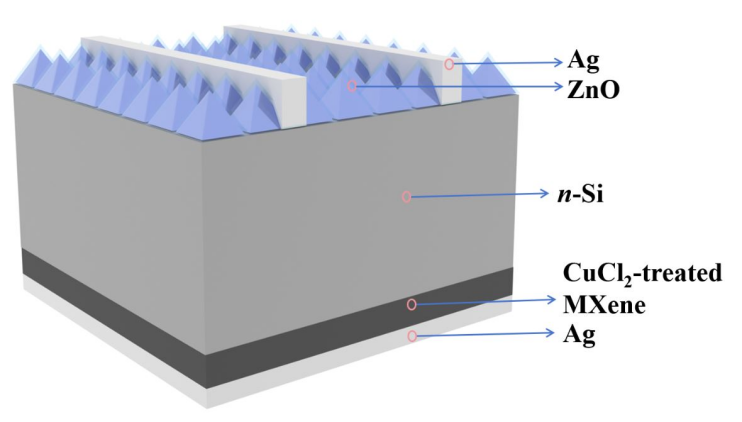A research group including scientists from Chinese module maker Longi has developed an undoped monocrystalline heterojunction cell that uses the promising MXene compound for the hole transport layer. The experimental device achieved an efficiency of 12.2% and was able to retain around 86% of its initial efficiency after 105-day exposure in ambient environment.

A group of scientists led by China's Lanzhou University and Chinese solar module maker Longi has designed an undoped heterojunction silicon solar cell based on hole transport layer relying on a functionalized two-dimensional titanium carbide known as Ti3C2Tx or MXene. MXene compounds take their name from their graphene-like morphology and are made via selective etching of certain atomic layers from a bulk crystal known as MAX. Recently, MXene materials have shown promise for use in PV technology due to their unique optoelectronic properties, such as their large charge carrier mobility, excellent metallic conductivity, and high optical transmittance.
Furthermore, these componunds have more tunable work function (WF) than the metal oxides and carbon materials that are commonly used to minimize parasitic absorption to short-wavelength light in heterojunction cells. “MXene has a more easily adjusted WF because of its abundant surface-terminating groups and is more stable than PEDOT:PSS-related organic materials,” the research's corresponding author, Junshuai Li, told pv magazine.
The researchers defined the solar cell as a “back heterojunction” device, as it was fabricated by drop-casting the Ti3C2Tx onto the
backside of an n-type monocrystalline silicon wafer with a thickness of 200 μm. They then treated the compound with copper chloride (CuCl2).
“The CuCl2 ethanol solution (10 mg mL 1) of 60 μL was spin-coated onto the MXene film and then annealed at 60 C for 10 minutes,” the scientists explained. “Due to the surface dipole effect, the electronic structure of MXene can be regulated through enriching the specific surface terminations, which results in the shift of the Fermi level and the electron redistribution, consequently leading to the WF change.”
The experimental cell was built with a silver (Ag) electrode, a zinc oxide (ZnO) electron transport layer (ETL), a silicon absorber, the Mxene hole transport layer (HTL), and an another Ag contact. “The Ag electrode with the WF of 4.26 eV is compatible with the ZnO layer for efficient electron collection. Moreover, the ZnO layer plays a role of antireflection,” the scientists specified. “When in contact with the
MXene layer, the electrons in n-Si flow into MXene because of the difference in the Fermi levels between them.”
Tested under standard illumination conditions, the device showed a power conversion efficiency of 12.2%, an open-circuit voltage of 0.615 V, a short-circuit current density of 30.75 mA/cm2, and a fill factor of 64.57%. “There is ample room for improvement,” Li said, referring to these figures. “Improving interfacial contact between n-Si and MXene is a critical part for exploration.”
The cell was also found to retain around 86% of its initial efficiency after 105-day exposure in the ambient environment.
The new cell concept was presented in the study “Construction of back-heterojunction crystalline silicon solar cells using Fermi-level-adjusted MXene by CuCl2,” published in the Journal of Power Sources. “Our work represents a valuable attempt to develop novel solar cells that may have a high performance-to-cost ratio,” Li concluded.